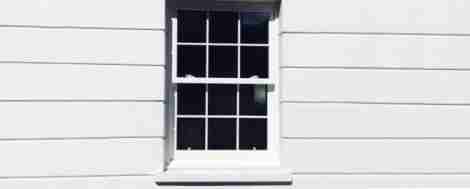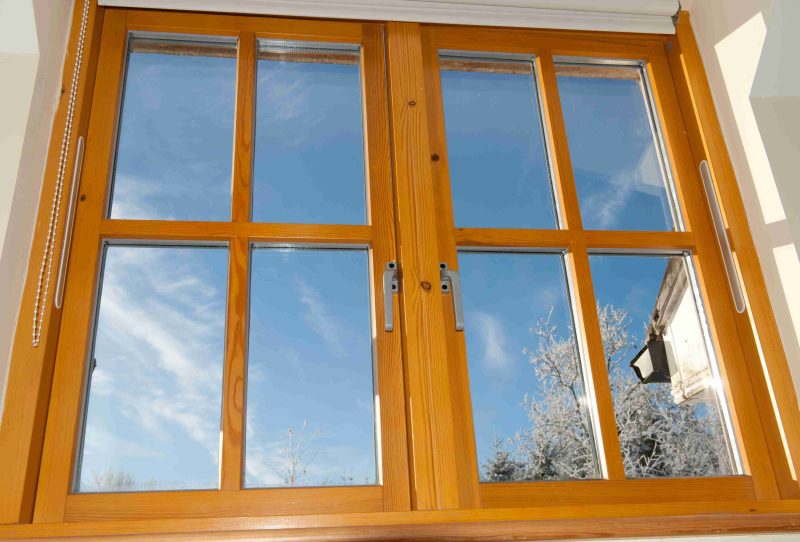

What are sash windows?
Sash windows are a traditional type of window that have been used in European buildings for centuries.
Providing excellent ventilation, and great heritage aesthetics, sash windows are the perfect way to cultivate a traditional look in a property.
How do they work?
Sash windows are made of two glazed timber frames, known as ‘sashes’ which slide up and down in a channel or track in the surrounding window case. These sashes are hung on ropes known as ‘sash cords’. These cords are connected to lead or iron counterweights, which help to counter-balance the overall weight of the sashes, making them much easier to open and close.
Confused? Why not read our blog about sash window terminology?
History of sash windows
A system of pulleys and weights was first applied to timber windows in the late 17th century. Thanks to their easy opening and their great ventilation benefits, this style of window gradually became popular throughout the country, appearing in a range of homes; from townhouses to stately homes.
Early sash windows use thick timber strips known as ‘astragals’ – or ‘Georgian bars’ – that divided the sashes into small panes. With the development of glassmaking technology, it soon became possible to manufacture increasingly larger panes and smaller astragals and by the 18th century it was common to find six panes of glass in each sash windows.
Thanks to contemporary technology and modern engineering, sash windows can be manufactured in both timber and uPVC. Both materials benefit from increased thermal performance in comparison with older windows.
Timber or uPVC sash windows?
In recent years, the development of manufacturing technology has meant that sash windows can now be created from uPVC, which has great thermal insulation benefits, even rivalling wood for energy efficiency.
Which material you choose for your type of window depends entirely upon your property’s style, as well as personal choice. However, both these materials differ in looks, energy efficiency, maintenance requirements, price and customisable options. Read our blog about timber vs. uPVC windows to learn more about the differences.
General maintenance: caring for your sash windows
Cleaning
Like any piece of equipment in regular use, a sash window benefits from periodic cleaning in order to make sure that all its parts are kept in good working order. A good rub down with a cloth and some warm water every few months will clear most dirt from a sash window and keep it in a good condition. Also, take care to keep the channels clear and free of dust to aid opening.
Repainting sash windows
Timber sash windows should be painted around every 5 years to keep them looking attractive and to prevent timber deterioration.
On particularly old sash windows, paint layers can build up and begin to flake off; it’s important to remove the old layers before repainting and avoid painting over the tracks or sash cord.Modern wooden sash windows made by a quality company are designed, treated and finished to such a standard as they will not require painting for many years. Plus, with timber windows there’s also the option to change the colour of your frames as often as you like!
Here’s a step by step guide about how to paint a sash window:
- After applying an undercoat or a primer, rub the surface of the window frame down with fine sandpaper to get rid of any dust that may have settled when the paint was drying.
- Apply masking tape around the edges of glass where it meets the window frame, to make sure that excess paint doesn’t get on to the glass.
- Start by raising the bottom sash, and lowering the top sash.
- Using a small brush, paint the astragal bars of the inner sash first, then the inner sash cross bar, and finally the two channels on either side of the sash. Be sure to spread the paint evenly.
- Next, lower the inner sash down and expose the outer sash. Finish painting the inner sash.
- Again, using a small brush, paint the outer sash in the same order as the inner sash (astragal bars, sash cross, two channels on either side of the sash)
- Leave the windows open until the paint has dried.
- When the paint on the sashes has dried, paint the surrounds. Shut the window and paint the exposed edges of the channel. Paint the cill last: lift the inner sash for added access.
- Continue painting the window, working outwards. Remove the masking tape when you’ve finished painting!
Troubleshooting
Old sash windows may not open or close for a number of reasons. These are commonly because:
- The window’s been painted shut
- The sash cords have broken and aren’t properly balancing weight
- The sides of the sash and case have worn, and only one side is balanced properly
If you find any of these problems are affecting the performance of your sash windows it’s best to consult a professional to get it fixed, without attempting to solve it yourself. At Premier, we can survey your old sash windows and give you a quotation for repair or like for like replacement.
Premier: South London sash window specialists
Premier Windows are specialists in sash window installation in Croydon and South London. For more information about any of our products or services please give us a call on 020 8683 4446, or contact us.

